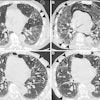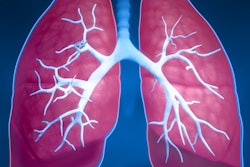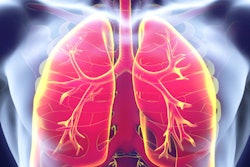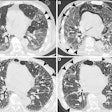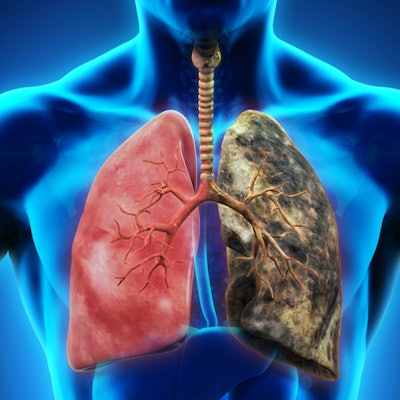
A computer-based simulation model projected that CT lung screening in several Asian countries could reduce lung cancer deaths by nearly 5% in a new study, recently published online in PLOS One. These populations are likely to benefit greatly from widespread implementation of CT lung screening, researchers say.
The group from Massachusetts General Hospital simulated CT lung cancer screening in China, Japan, Singapore, and South Korea using the Lung Cancer Policy Model (LCPM), a microsimulation model validated and used by the U.S. Preventive Services Task Force (USPSTF) to establish lung cancer screening recommendations (PLOS One, July 30, 2019).
Large-scale trials in China and Japan have demonstrated that CT lung screening can detect a high proportion of early-stage cancers and reduce lung cancer mortality by as much as 51%. These and other positive findings have encouraged federal agencies in the countries to provide free lung screening services in select urban communities for a number of years. In addition, the South Korean government released temporary guidelines for CT lung cancer screening in 2015, emphasizing the value of screening for long-time smokers.
Despite these promising advances, there remains a need for "screening research and policy to assume greater priority in Asia as lung cancer continues to disproportionately burden this region," wrote senior author Chung Kong, PhD, an assistant professor of radiology at Harvard Medical School, and colleagues.
Seeking to support this effort, Kong and colleagues used the LCPM model to highlight the potential benefits of offering CT lung screening to the general population of China, Japan, Singapore, and South Korea over the course of the next two decades.
For the simulation, the model took into account data from national surveys administered by each of the four countries to determine differences in smoking prevalence and data from the World Health Organization database regarding lung cancer mortality rates. The model also incorporated eligibility criteria from the U.S. Centers for Medicare and Medicaid Services (CMS) for lung screening, which factor in age and smoking history.
From 2020 to 2040, the model projected overall lung cancer mortality reductions ranging from approximately 4% to 5% for smokers who participated in screening, depending on the country. The model also showed that averting these lung cancer deaths could result in considerable gains in total life years saved.
| Effect of CT lung cancer screening in Asia based on microsimulation modeling | ||||
| Singapore | China | Japan | South Korea | |
| Lung cancer mortality reduction | 3.77% | 4.22% | 4.33% | 4.74% |
| No. of lung cancer deaths avoided | 1,290 | 471,095 | 45,774 | 14,504 |
| Life years gained per lung cancer death prevented | 6.29 | 6.4 | 6.34 | 6.3 |
CT lung screening using the CMS eligibility criteria turned out to be most effective in South Korea and the least effective in Singapore -- a discrepancy that may be explained by the much higher prevalence of smoking in South Korea, the authors noted.
Overall, the estimated reductions in lung cancer mortality fell short of the 20% reduction reported in the U.S. National Lung Screening Trial (NLST) and the 26% in the Dutch-Belgian Randomized Lung Cancer Screening (NELSON) trial.
However, this drop-off may stem from the model's reliance on screening guidelines that are optimized for the U.S. population, according to the researchers. Studies have shown that smoking behavior and also the incidence of lung cancer in nonsmokers differ considerably between Asian and U.S. populations.
"China, Japan, South Korea, and Singapore all have the resources necessary to implement national lung cancer screening programs and, furthermore, have a clear incentive to do so from a public health perspective. ... To maximize the benefit of [CT lung cancer] screening, each country should establish a screening guideline fitted to its own demographic makeup and smoking profile," they wrote.


